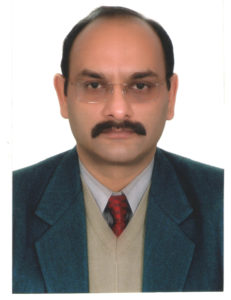When medical traditions and dogma clash with research and evidence, it’s time to consider the clinical implications to patient care. Not everything is what it seems, as Virendra K. Arya, M.D., FRCPC, will explain during Monday’s session, “Investigating Traditions, Dogmas and Myths in Anesthesia Practice.”

Virendra K. Arya, M.D., FRCPC
Dr. Arya, a Professor of Anesthesiology in PGIMER-Chandigarh, India and a Visiting Professor in Anesthesiology at the University of Manitoba in Winnipeg, Canada, will stress the anesthesiologist’s responsibility in weighing “what has always been” with what the current evidence states.
“Despite the fact that anesthesia delivery has evolved significantly over the past 50 years with the introduction of state-of-the-art monitoring devices, newer anesthetic drugs, airway management equipment and electronic record keeping, anesthesiologists still religiously adhere to a variety of fundamental dogmatic beliefs and perform a series of trusted practices inherited from founding fathers of the specialty that have never been subjected to scientific scrutiny and often have no proven merit,” Dr. Arya said.
Investigating Traditions, Dogmas and Myths in Anesthesia Practice
1:15 – 2:15 p.m.
Monday
W304EFGH
During the session, Dr. Arya will define a number of traditions, dogmas, myths and facts in medicine, while spotlighting several clinically relevant dogma-based concepts and practices in anesthesia. This includes the standard teaching of oxygen therapy suppressing hypoxic drive in COPD, the traditional practice of demonstrating mask ventilation after induction and before giving NMB, giving 100% FiO2 at reversal, preload reduction theory after central neuraxial blocks, a gravity dependent explanation for west zones in the lung, practice of avoiding spinal anesthesia in severe AS, HOCM and TOF, and the concept of preservation of RV and LV contractility after central neuraxial block.
The problem, according to Dr. Arya, is that dogmas represent physician beliefs or teachings that are proclaimed as “unquestionably true” and are mostly not investigated. Similarly, myths in medicine represent collective beliefs that are unproven or not based on scientific evidence.
“Facts in medicine mean that they are proven with existing scientific evidence. Even what we call evidence-based medicine today, sometimes may not be reflective of the truth. By definition the ‘truth’ is something that does not change,” he said. “However, everything that we perceive around us keeps changing and our perception of truth does not necessarily make it true. Hence, it is important for us to keep changing and updating to keep ourselves aligned with the ever-evolving truth around us.”
Change is influenced by genetics, mutations, resistance to bacteria, the environment, disease patterns, and even diet and lifestyle. For example, he said, marijuana was once illegal but now legal in some states. As consumption increases, how that will interact with current anesthetic guidelines needs to be investigated in the near future. Thus, it’s important to continue reviewing existing evidence and striking a balance between the individual experience and what the growing evidence reveals in the practice of safe medicine.
Dr. Arya points to the fact that human senses as well as mind are limited. Unfortunately, the mind doesn’t know its own limitations for handling information. It’s not only important to generate evidence that speaks the truth, but also to understand how the human mind perceives and comprehends information.
“Some of the above dogmas seen in the light of current evidence change the existing clinical practice and level of understanding,” Dr. Arya said. “Open-mindedness is required all of the time, and we must question the practices that do not work well in a pragmatic world.”
Return to Archive Index